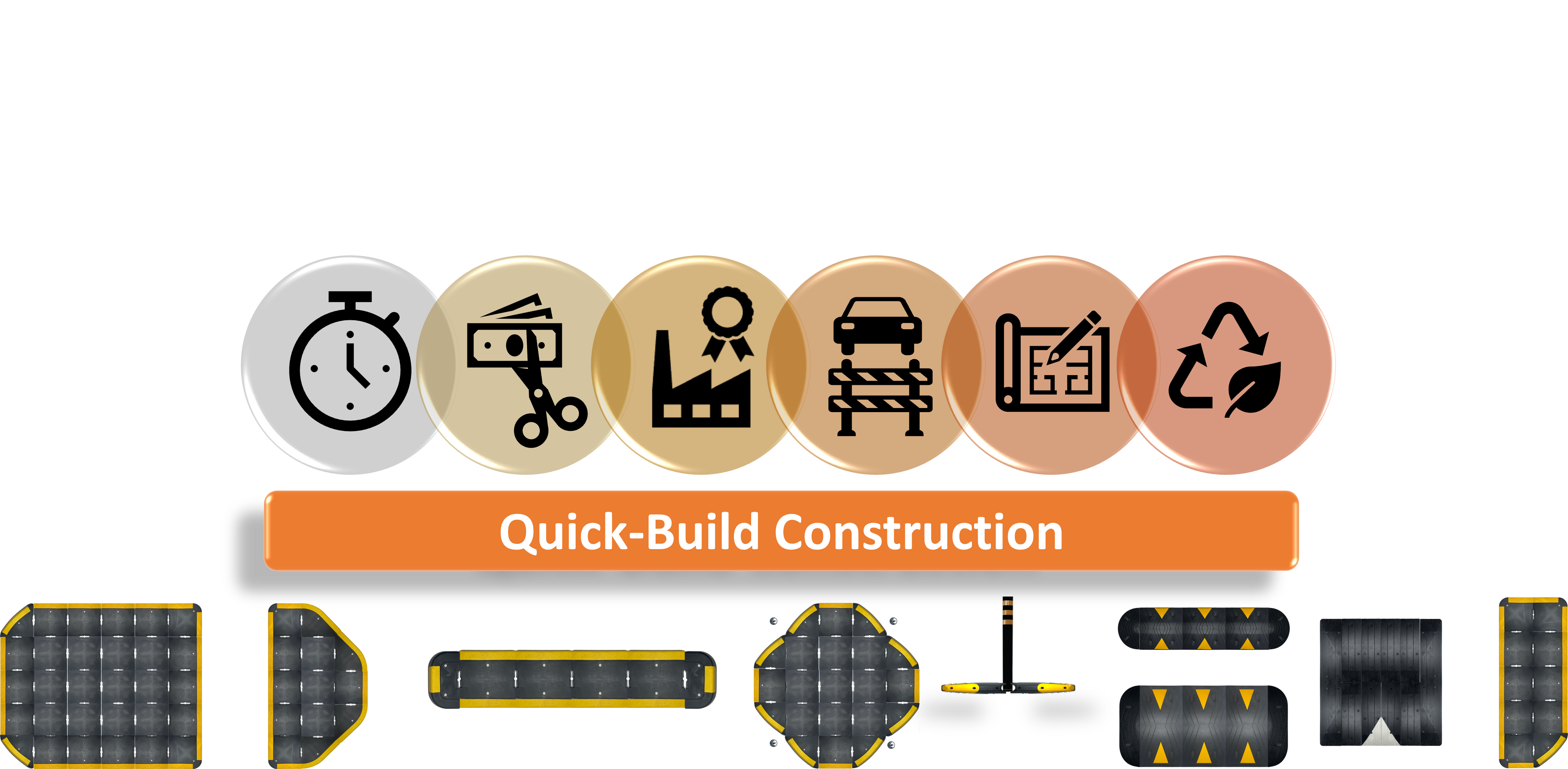What are the Advantages of Quick Build Construction?
Pedestrian Refuges, Lane Dividers, Traffic Circles, Bike Lanes, Speed Humps, Speed Cushions and Curb Extensions
Using quick-build materials for infrastructure improvements offers several advantages for agencies.
Here are some reasons why an agency might choose to utilize these materials:

1. Speed and Efficiency: Quick-build materials are designed to expedite construction processes. They are often prefabricated or modular components that can be rapidly assembled on-site, saving significant time compared to traditional construction methods. This allows cities to complete infrastructure projects more quickly, minimizing disruptions to daily life and reducing the duration of construction-related inconveniences for residents.

2. Cost-effectiveness: Quick build materials can help cities achieve cost savings in various ways. The efficiency of construction using these materials translates into reduced labor costs and shorter project timelines, ultimately resulting in lower overall expenses. Additionally, the controlled manufacturing environment for prefabricated components can lead to better cost predictability and reduced material wastage.

3. Quality Control: Quick-build materials are often manufactured in controlled factory settings, where standardized processes and quality control measures are implemented. This can result in improved construction quality and durability compared to on-site construction, which may be subject to variable conditions and skill levels. By utilizing high-quality prefabricated components, cities can enhance the longevity and reliability of their infrastructure.

4. Minimized Disruptions: Infrastructure projects can cause inconvenience to residents, businesses, and commuters due to road closures, detours, noise, and other construction-related disturbances. Quick-build materials allow for faster completion of projects, which helps minimize these disruptions. By reducing the duration of construction activities, cities can mitigate the negative impacts on the daily lives of their residents and maintain smoother traffic flows.

5. Flexibility and Adaptability: Quick-build materials often offer greater flexibility in design and adaptability to changing needs. Modular components can be easily reconfigured or relocated as requirements evolve, providing cities with more options for future expansion or modifications. This adaptability can be particularly useful in urban environments where space is limited or where infrastructure needs may change rapidly due to shifting demographics or technological advancements.

6. Sustainability: Many quick-build materials are designed with sustainability in mind. They may incorporate eco-friendly materials, energy-efficient features, or sustainable construction practices. By using these materials, cities can reduce their environmental impact and contribute to the development of more sustainable infrastructure.
Overall, quick-build materials provide agencies with a practical and efficient solution for infrastructure improvements, offering benefits such as speed, cost-effectiveness, quality control, minimized disruptions, flexibility, and sustainability.
Check out our SaferRoads’ line of quick-build solutions that will improve the safety of motorists and vulnerable road users. Quicky build out protected pedestrian refuges, lane dividers, traffic circles, bike lanes, speed humps, speed cushions and curb extensions and even safer outdoor dining areas.
Greg Driskell, CEO
PPP, Inc.



